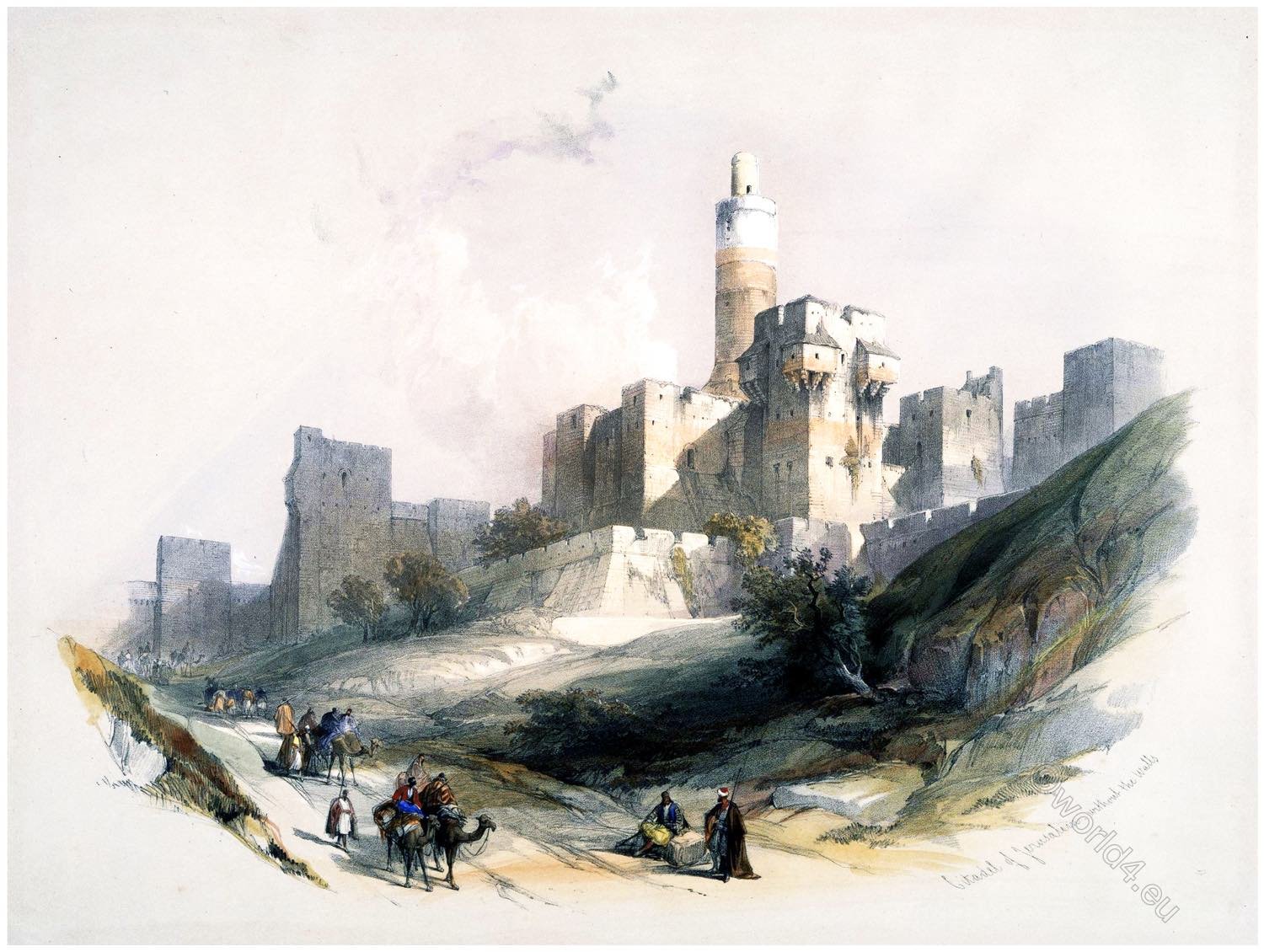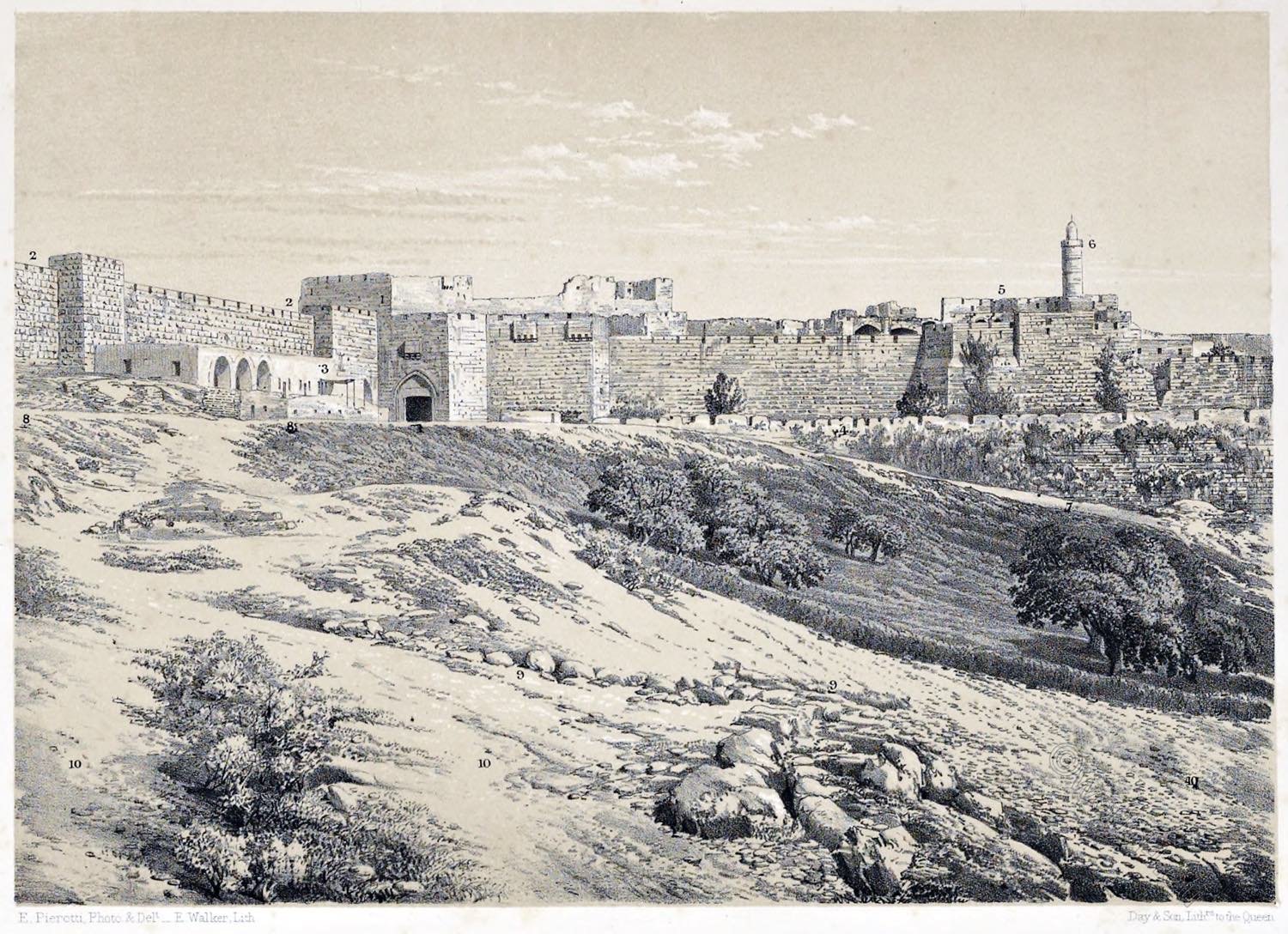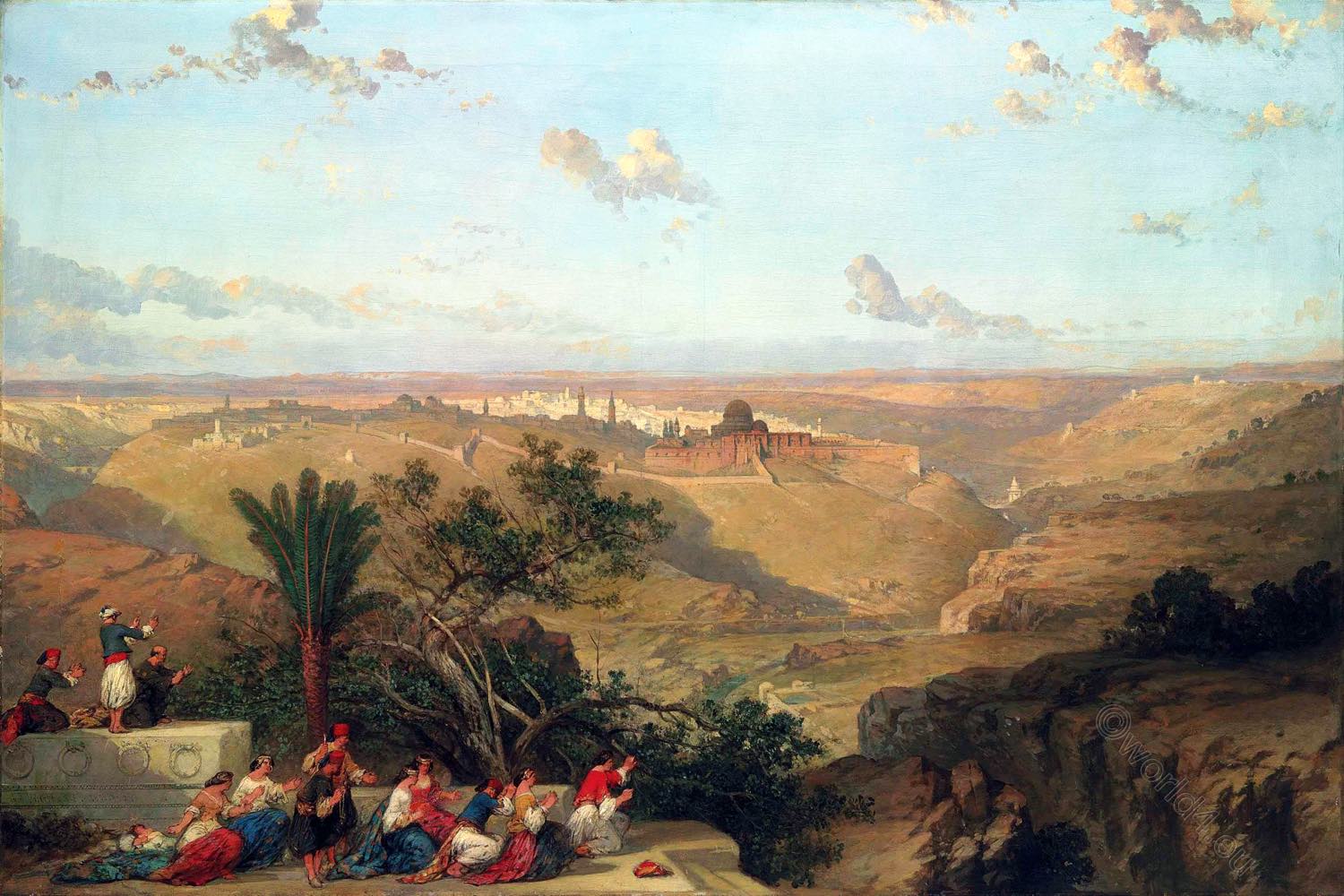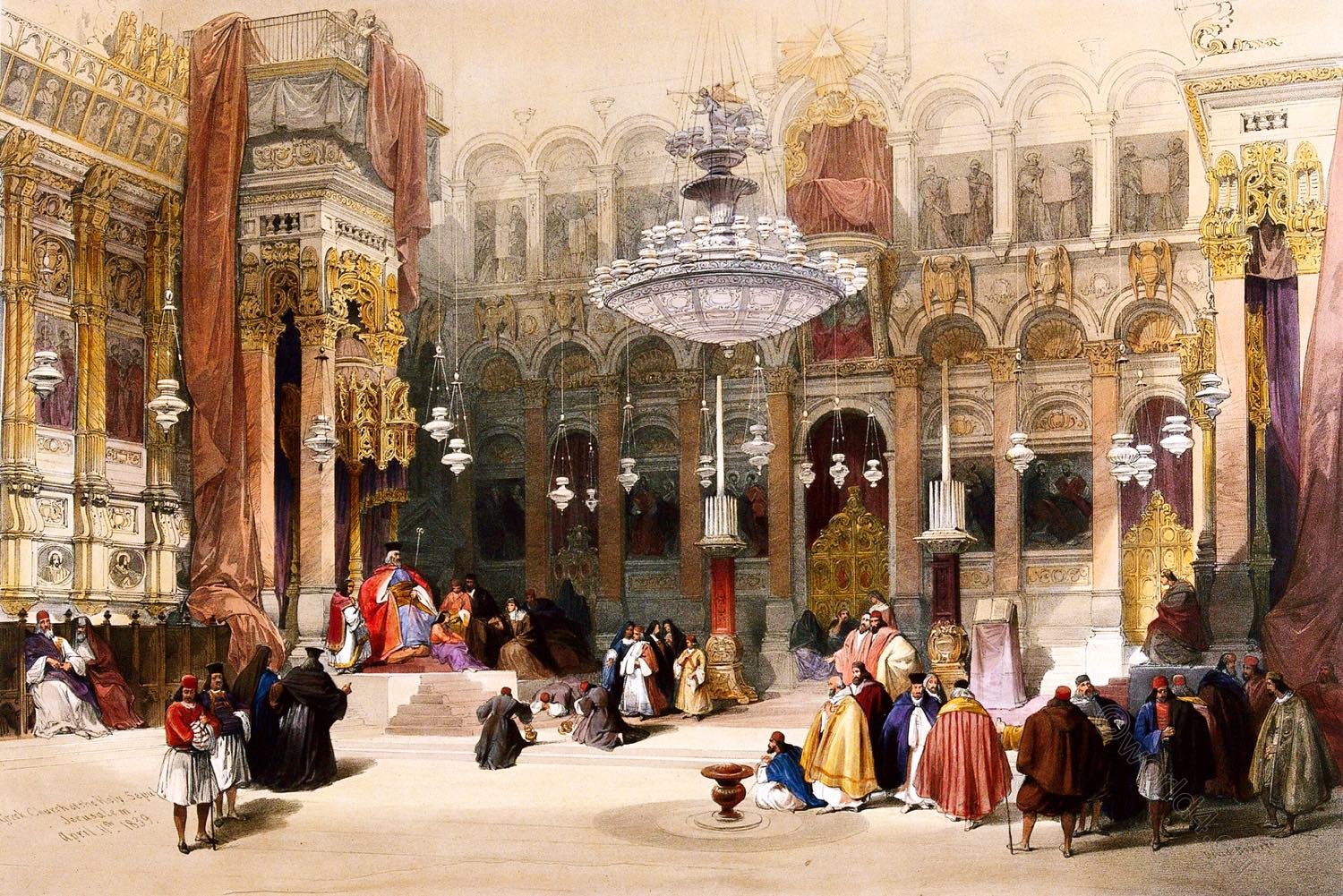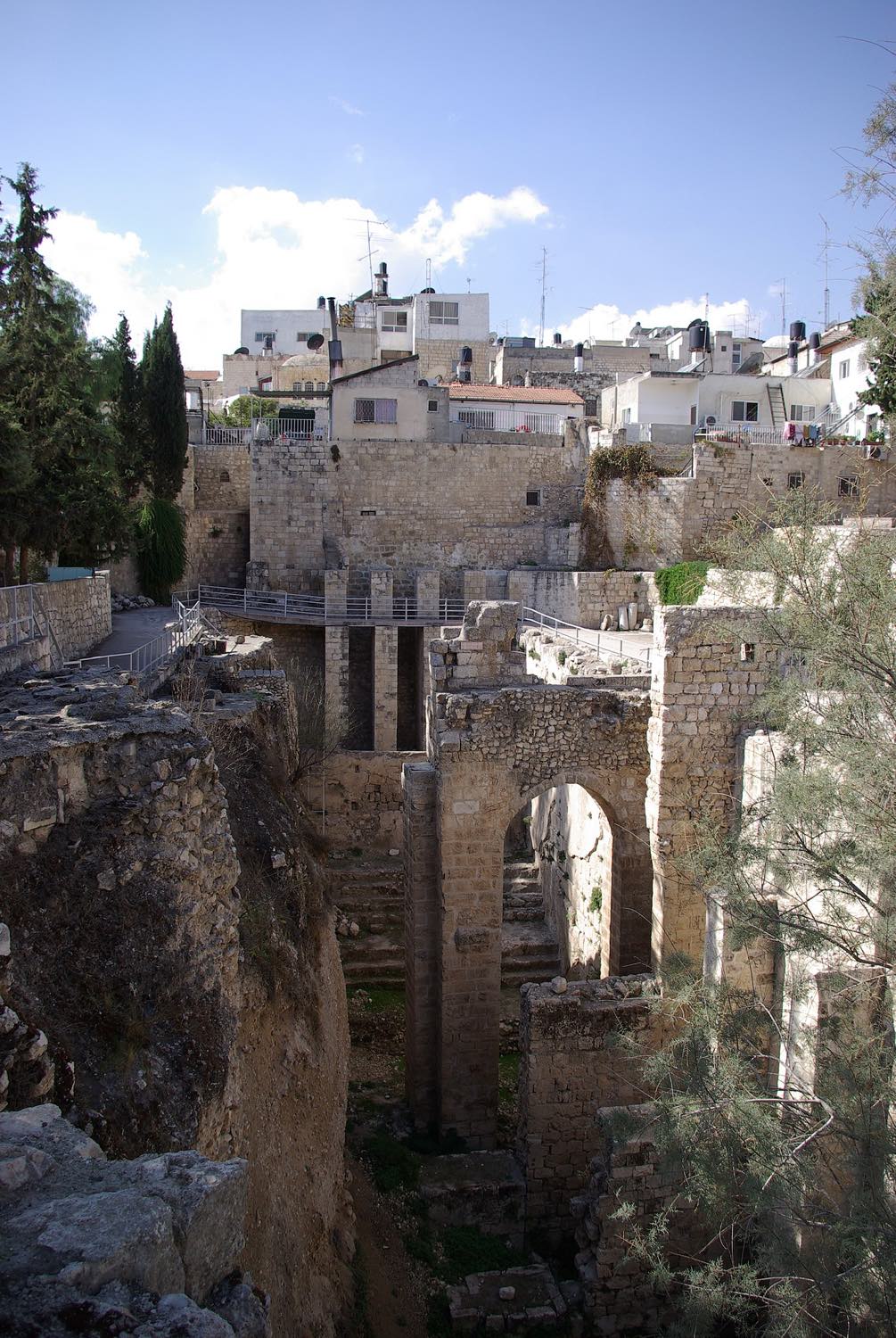
Jerusalem, Bethesda. View to the west. The picture shows the south basin, with a buttress supporting the aisle of a former Byzantine church. Created: 10 November 2008 (Photo: Berthold Werner, Public domain, via Wikimedia Commons).
The pool of Bethesda (Hebrew: בית-חסדא, literally: “house of mercy”), located in Jerusalem, is the name of a cistern that was also said to have healing powers. It is mentioned in the Gospel according to John 5 as the place where a miracle of Jesus took place in favour of a paralytic. The Gospel description emphasizes that it had five porticos.
Following the restoration work undertaken on the church of St Anne in Jerusalem in 1888, the remains of two large pools with five porticoes were found. A rediscovered fresco on one of the walls depicts an angel moving water (and this detail is mentioned in the Gospel text).
The pool was built in the 8th century BC and was called the Upper Pool (in Hebrew “הבריכה העליונה”). Other pools were built in the 3rd century BC by the high priest Simon. These pools were used to wash the lambs before their sacrifice in the Temple. This method of using the pools gave the water an aura of holiness and many sick people came to bathe in the pool in the hope of being cured. From the meaning of ‘Pool of Lambs’ came the name ‘Probatic Pool’ by which it is also known.
The pools are named in the New Testament. The name Betzaeta can mean “house of mercy”. In the Gospel of John it is stated that it was located near the “Gate of Sheep” or “Probatic Gate”.
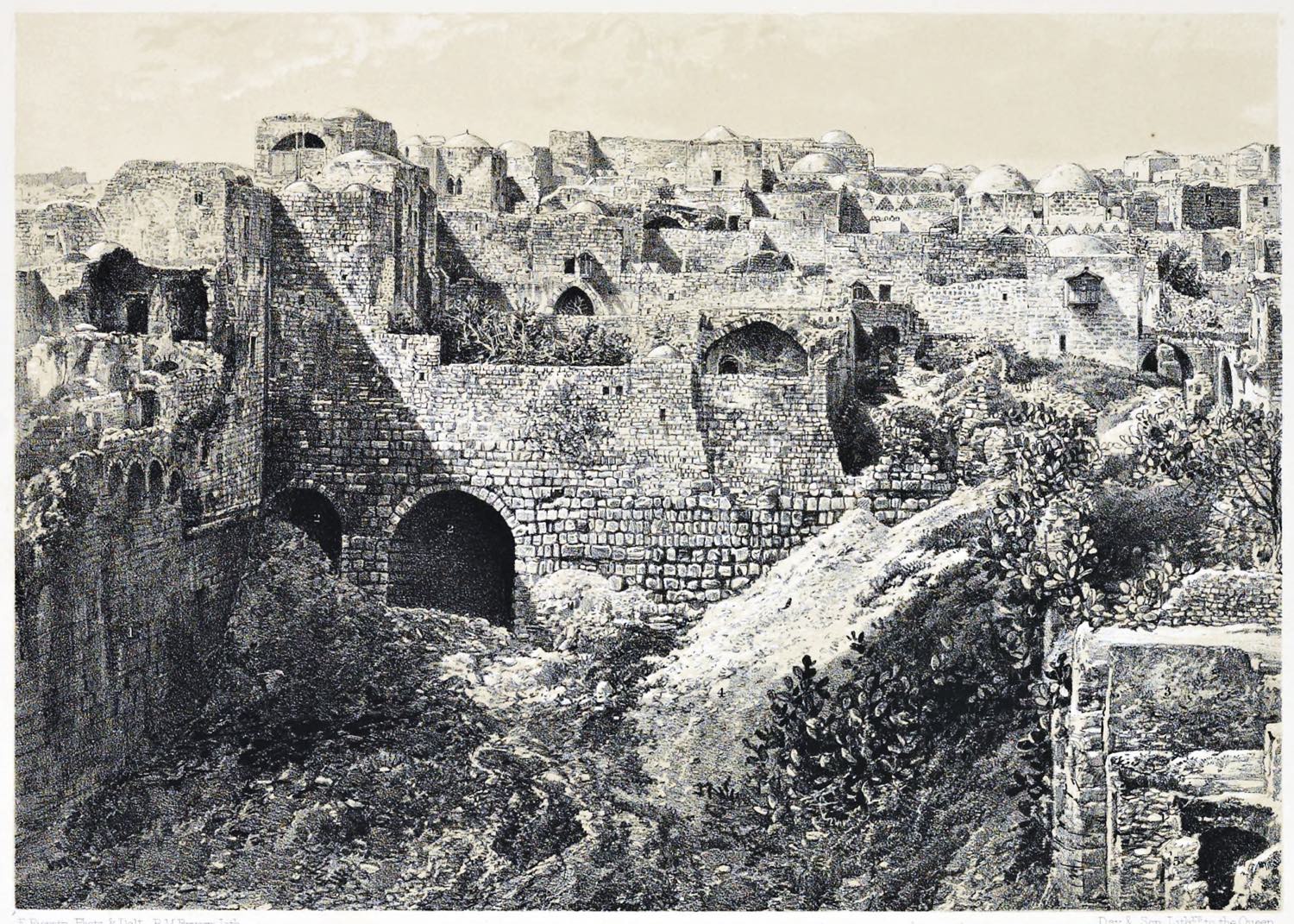
VIEW OF THE POOL OF BETHESDA.
PLATE XVI.
- Ancient Masonry of the Southern Wall of the Pool.
- Mouths of the Sewers coming from the West.
- Ancient Masonry of the Northern Wall of the Pool.
- Heap of Ruins and Rubbish.
THE POOL OF BETHESDA.
by David Roberts
The eagerness of the early monks to give Scriptural names to every prominent feature of Jerusalem, has affixed the title of the “Pool of Bethesda” to the reservoir on the north of the Great Mosque.
In the opinion of Robinson, this reservoir merely formed a part of the fosse of the “Acropolis,” or Fortress of Antonia. Its dimensions certainly seem altogether incompatible with the purposes of the Bethesda of Scripture, whether those were the bathing of the sick, or the washing of sheep preparatory to their sacrifice in the Temple for it measures 360 feet in length by 130 in breadth, and is 75 deep, even now, though there is evidently a great accumulation of earth at the bottom. There can be, however, no doubt of its having been used as a reservoir, for its sides have been cased with small stones, and those again have been covered with plaster; but this portion of the work wants the completeness of ancient skill.1)
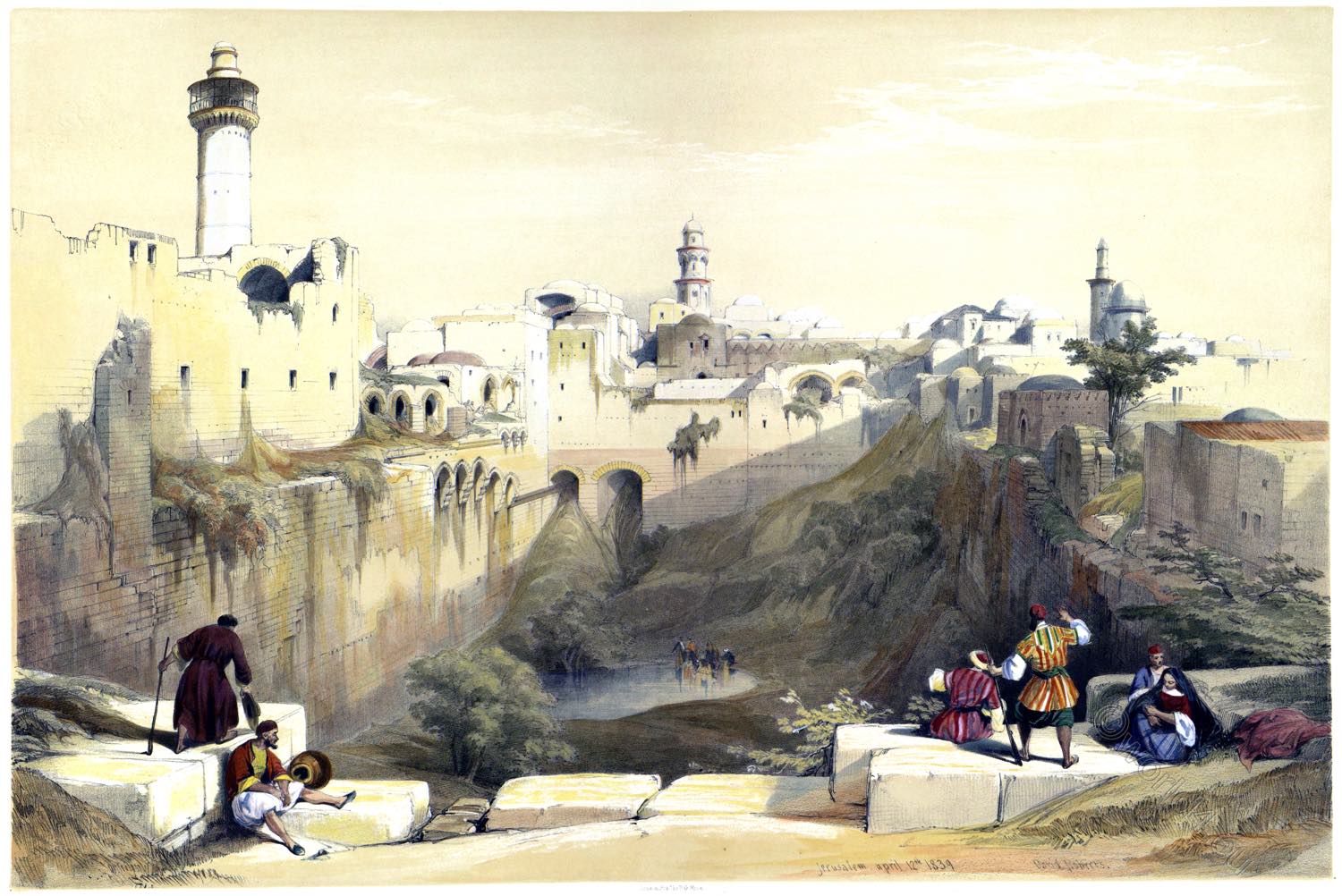
The western end is built up like the rest, except at the south-west corner, where two lofty arched vaults extend under the houses which cover that quarter. The northern one of those arches is nineteen feet broad, and it has been penetrated to the extent of a hundred feet, and apparently extends farther. The other is twelve feet in breadth, but both are heaped with earth. It is conjectured that the trench, of which this excavation forms a part, was filled up by Titus in the siege, when, in order to carry on his works for the assault of the Temple, he leveled the Fortress of Antonia.
Eusebius and Jerome speak of a piscina probatica, shown in their day as Bethesda, a double pool, one part filled by rums, and the other tinged of a reddish dye, as if mixed with blood; but they give it no locality. The name in later times was applied, apparently, from the neighborhood of the reservoir to the St. Stephen’s Gate, which was mistaken for the sheep-gate.
The bottom is generally dry, though at the time of the Artist’s visit, in April, there was some water stagnating in it. It contains shrubs, and a few trees not tall enough to reach above the level of the street.
The view is taken from the street leading to the Great Mosque. The characteristic feature of Jewish architecture is exhibited in the domes, which form the roof of every house, a result of the costliness of timber; but, from its wanting the lightness of the Oriental dome, in general the effect is poor and monotonous. The tower on the right is the minaret standing in the inclosure of the mosque, and the ruins beneath are conceived to be the remnants of the Tower of Antonia.2)
1) Biblical Researches, vol. i. p. 434. 2) Roberts’s Journal.
Source:
- The Holy Land, Syria, Idumea, Arabia, Egypt, & Nubia, by David Roberts, George Croly, William Brockedon. London: Lithographed, printed and published by Day & Son, lithographers to the Queen. Cate Street, Lincoln’s Inn Fields, 1855.
- Jerusalem Explored. Being a description of the ancient and modern city, with numerous illustrations consisting of views, ground plans, and sections by Ermete Pierotti, translated by Thomas George Bonney (Fellow of St Johns College, Cambridge). London: Bell and Daldy; Cambridge: Deighton, Bell and Co. 1864.
- Photo Credit: Jerusalem, Bethesda. Berthold Werner.
Continuing
Discover more from World4 Costume Culture History
Subscribe to get the latest posts sent to your email.


